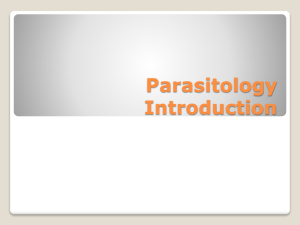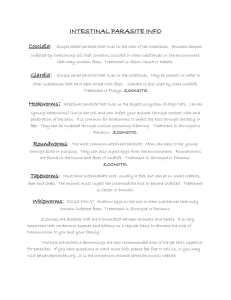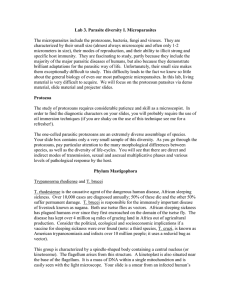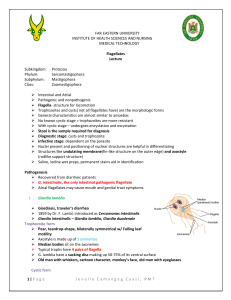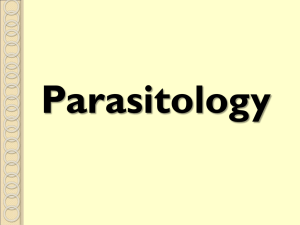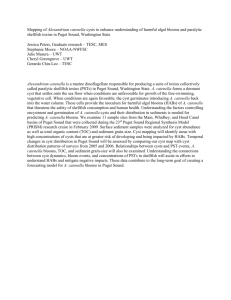Balantidium coli
advertisement
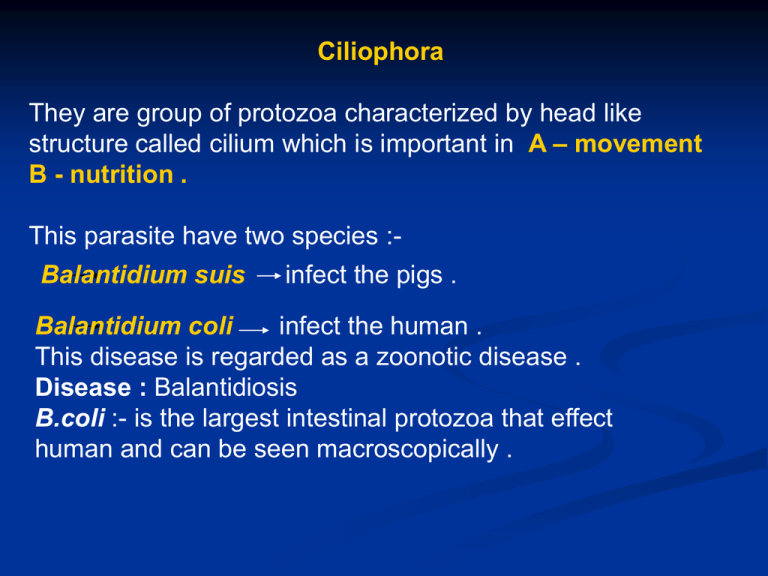
Ciliophora They are group of protozoa characterized by head like structure called cilium which is important in A – movement B - nutrition . This parasite have two species :Balantidium suis infect the pigs . Balantidium coli infect the human . This disease is regarded as a zoonotic disease . Disease : Balantidiosis B.coli :- is the largest intestinal protozoa that effect human and can be seen macroscopically . Morphology :- the parasite is observed in two stages only which are :A – trophozoite :1- Large size (40 µm to more than 70 µm) . 2- called the invasive stage . 3- ovoidal in shape . 4- covered by cilia & the anterior end are longer than the posterior end . 5- in the anterior end there is mouth called cytosome . 6- the internal structures :A- have two nuclei , the macronucleus (the largest one) & micronucleus (the smallest one ) . B- the macronucleus is kidney or bean in shape . C- the micronucleus is small spherical shape located in the concavity of macronucleus . D- have two secretory contractile vacuoles . E- numerous food vacuoles . B- Cyst :1- typically spherical in shape . 2- surrounded by thick wall (one or two layers ) by encystation in small intestine to protect the parasite from the host . 3- contain the macronucleus and contractile vacuoles are visible in the cyst . 4- the cilia are undetectable , only the roots may present . Multiplication :- occur by two method 1- Asexual type by binary fission . 2- Sexual type by conjugation . Life cycle :- direct life cycle or simple life cycle that mean the parasite not need for intermediate host . Mature cysts are passed with feces. Transmission :- by ingestion of contaminated food or water (NOT in undercooked meat) with feces contain the mature cyst . Excystation occurs in the small intestine, and the trophozoites colonize in the large intestine. Trophozoites undergo encystation to produce infective cysts. Cysts are the infective stage of this parasite.



